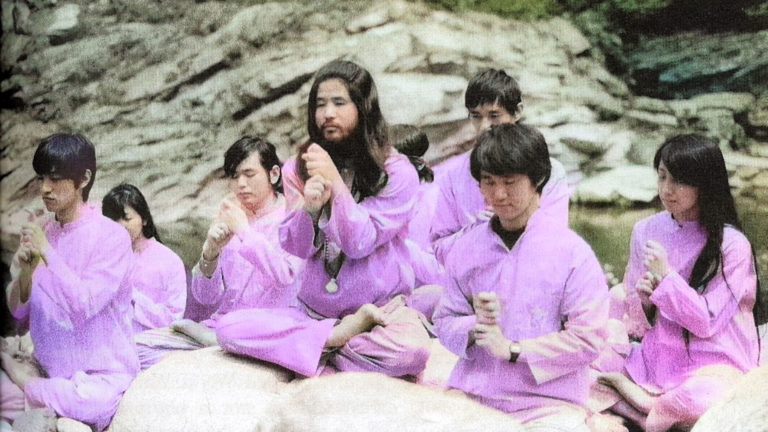
Two months after the Great Hanshin Earthquake Disaster killed 6,433 people and caused more than $100 billion in damages, a sarin gas attack took place in a Tokyo subway in 1995. Harrowing sounds echoed throughout the subway which sent shivers down to the spine of a first responder. The incident shocked the world, and was difficult to comprehend since the terrorists were the victims’ own countrymen.
By the late 1980s, Japan’s economic resurgence was wavering. The nuclear arms race between the U.S. and the Soviet Union prompted fears, and there was definitely a pessimistic outlook on the horizon. It was a time when an “occult boom” was emerging, which led to conspiracy-theories of an impending Armageddon.
The self-proclaimed religious leader Shoko Asahara started as yoga instructor who transformed his practice into Aum Shinrikyo to establish his fledgling venture into a legally established religion in 1987. To promote Aum, Asahara produced books and anime to spread his gospel, which was most notable for proclaiming that adherents would attain the superpowers he claimed he had, namely, the ability to read people’s minds and levitate the body.
Aum attracted a disaffected young generation who’d been raised by busy and inattentive parents, dysfunctional members of the World War II generation. One of Aum’s practices was to indoctrinate their recruits and get them to forfeit the money to the group, which encouraged them to cut off from their families, who inevitably seek them out later and accuse the religion of brainwashing their kids.
Two of the parents, Eiko and Hiroyuki Nagaoka, whose son disappeared into Aum Shinrikyo, formed the Aum Shinrikyo Victims’ Association, and decided to partner with attorney Tsutsumi Sakamoto to get answers about cult leaders and enigmatic religion.
Unlike other countries, Japan is one with a history of suppressing freedom of religion, so no one wanted to be critical of Aum Shinrikyo back then. On the contrary, many media outlets ended up boosting the cult’s image by having them on TV, where they could present themselves as innocent, friendly and entertaining. To everyone’s surprise, Asahara even had a very engaging conversation with famed actor/director Takeshi Kitano at one point.
Even when Sakamoto, his wife and baby son went missing shortly after a television appearance opposing Asahara, the police only put in a minimal effort investigating Aum Shinrikyo, to avoid further complications with the cult religion. Asahara proceeded to create a political-party offshoot of the cult, but when Asahara’s 1990 campaign for a seat in Japan’s House of Representatives ended in public humiliation, he pivoted his cult in a more violent direction.
There were multiple times throughout this saga, when police could have stopped things from spiraling out of control. But because the cult’s web of influence was so vast, their misdeeds were under-investigated by authorities and that meant it took time to bring them down.
A new documentary debuting at this year’s Sundance Film Festival, “Aum: The Cult at the End of the World,” looks into the cult’s emergence. The film details the accelerated fall of the organization and Asahara, and demonstrates how law enforcement — wary of persecuting a religious group — allowed this domestic terrorist organization to continue to dole out harm.
The doc is a non-fiction adaptation of journalists Andrew Marshall and David E. Kaplan’s “The Cult at the End of the World: The Incredible Story of Aum.” Filmmakers Ben Braun and Chiaki Yanagimoto chart the rise of Asahara, from eccentric yoga teacher to a wealthy arms buyer who used the Russian military tactics with his followers. The film relies on Kaplan and Marshall for ample exposition and their incisive approach creates an unsettling feeling throughout the movie.
The film has a big interview with Fumihiro Joyu, once Asahara’s right-hand man, who had worked at JAXA (The Japanese equivalent to NASA). In the aftermath of the attack, he served as something of an Aum spokesman, even though he wasn’t even in Japan when the sarin attack happened. Later at trial, Joyu testified about the information on sarin that was published on the Internet by an American scholar at the time. One of Aum’s adherents, Masami Tsuchiya, and others found out about it through this info.
After some trial and error, they ended up making the sarin. But things could have been worse than the gas attack. If Joyu had implemented the Russian military tactics he learned when he was in Russia, it is scary to see the grin beneath his calm manner.

